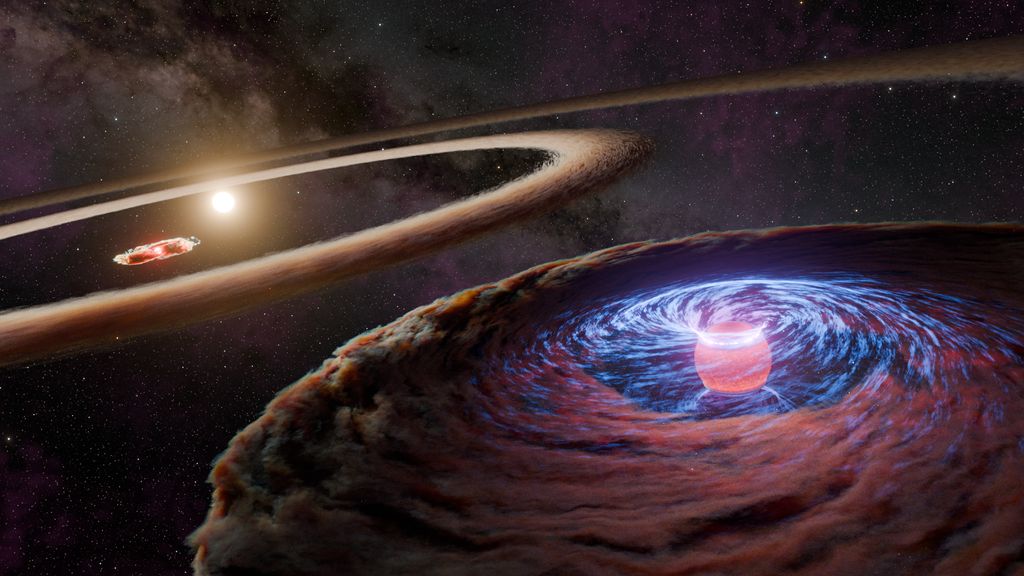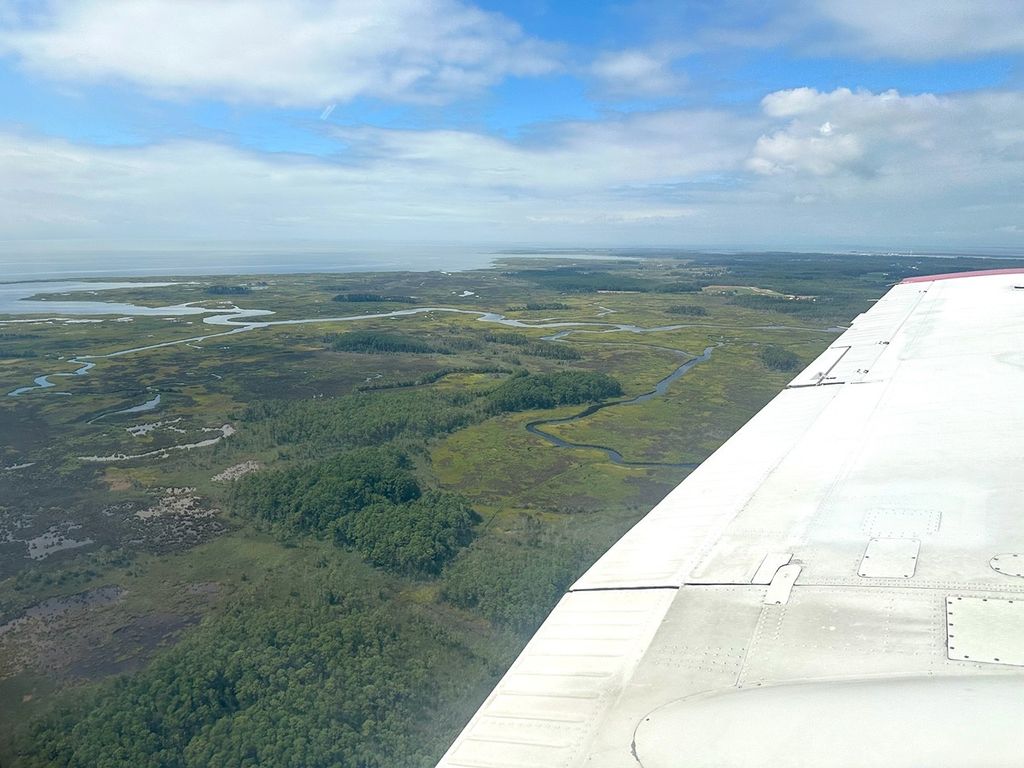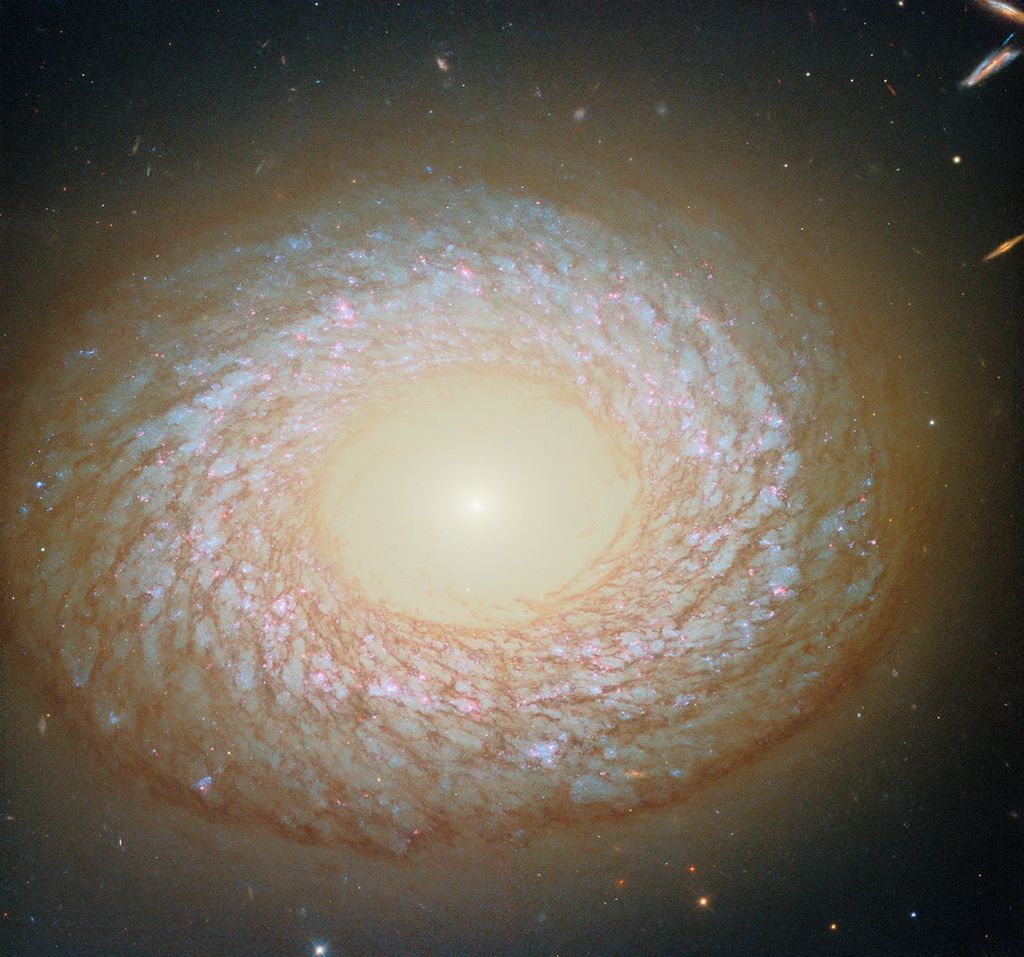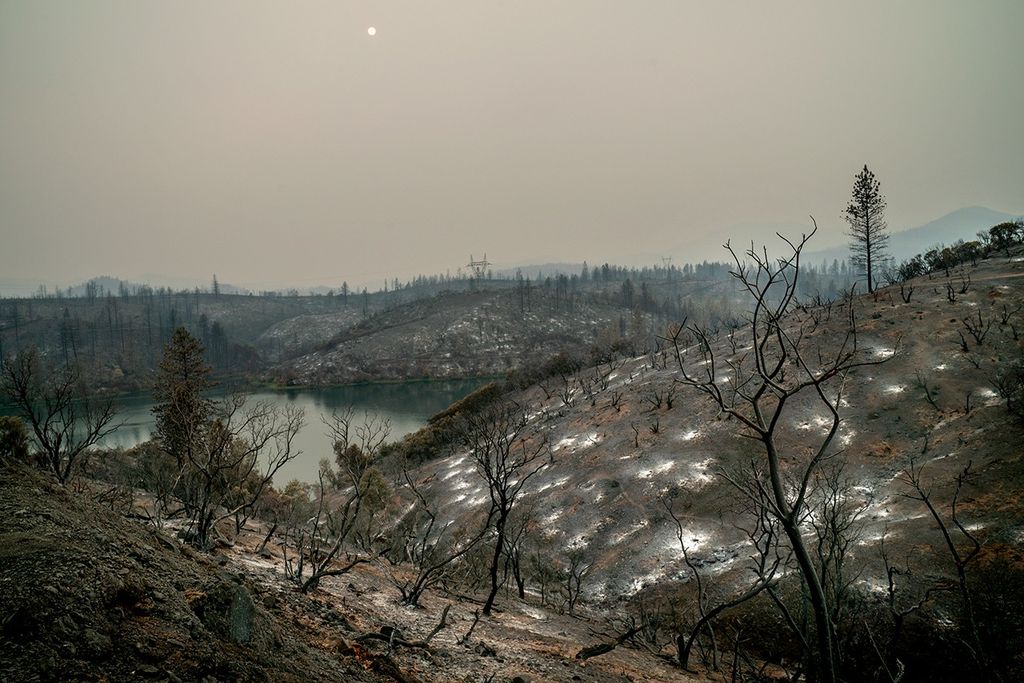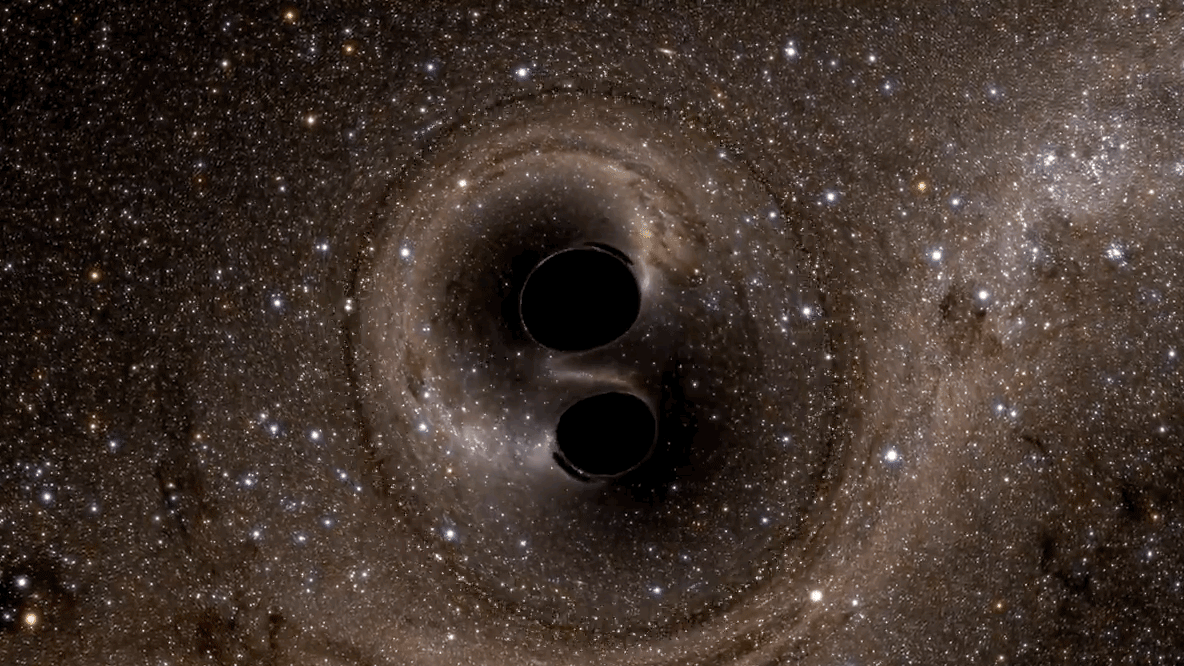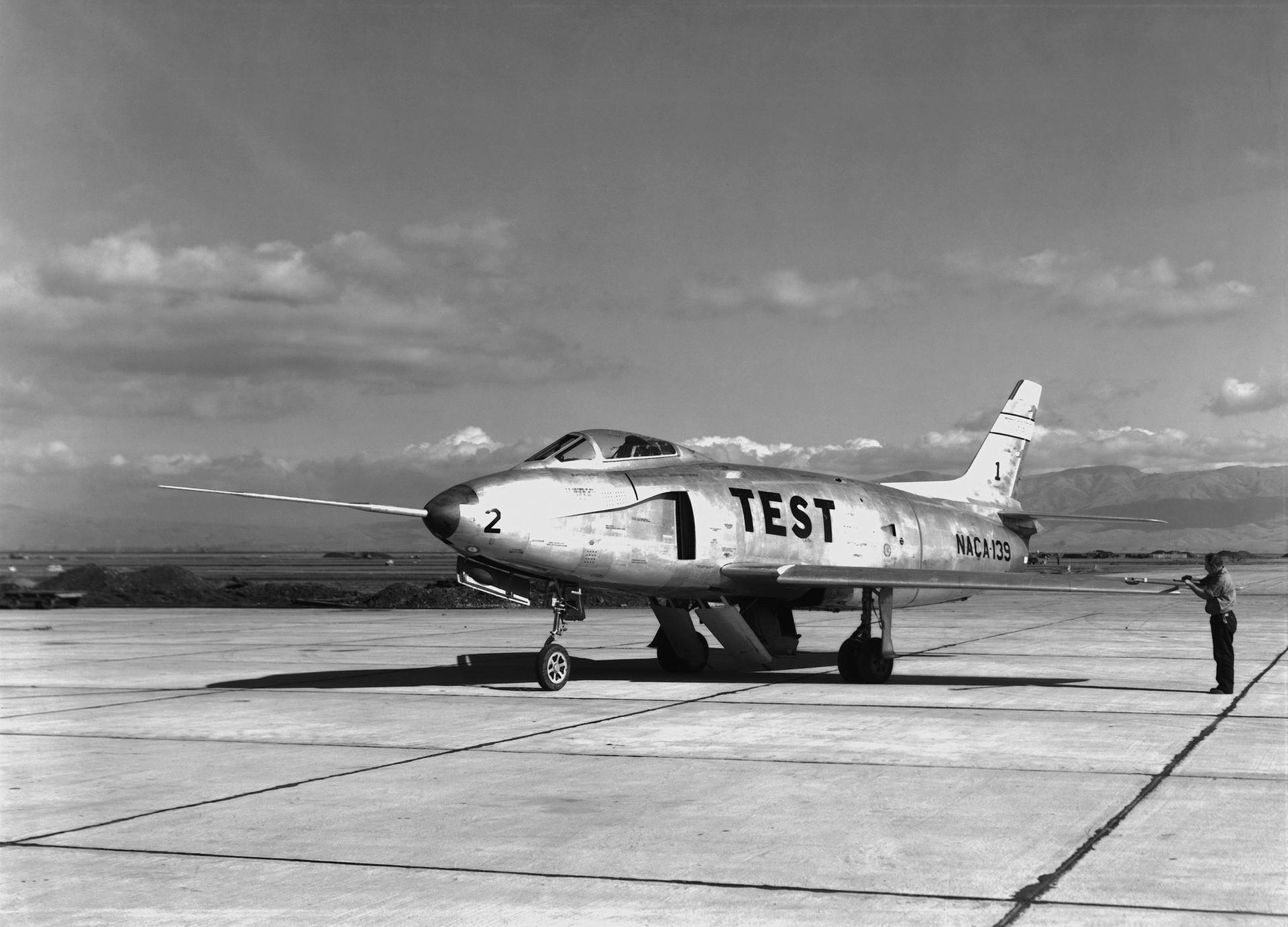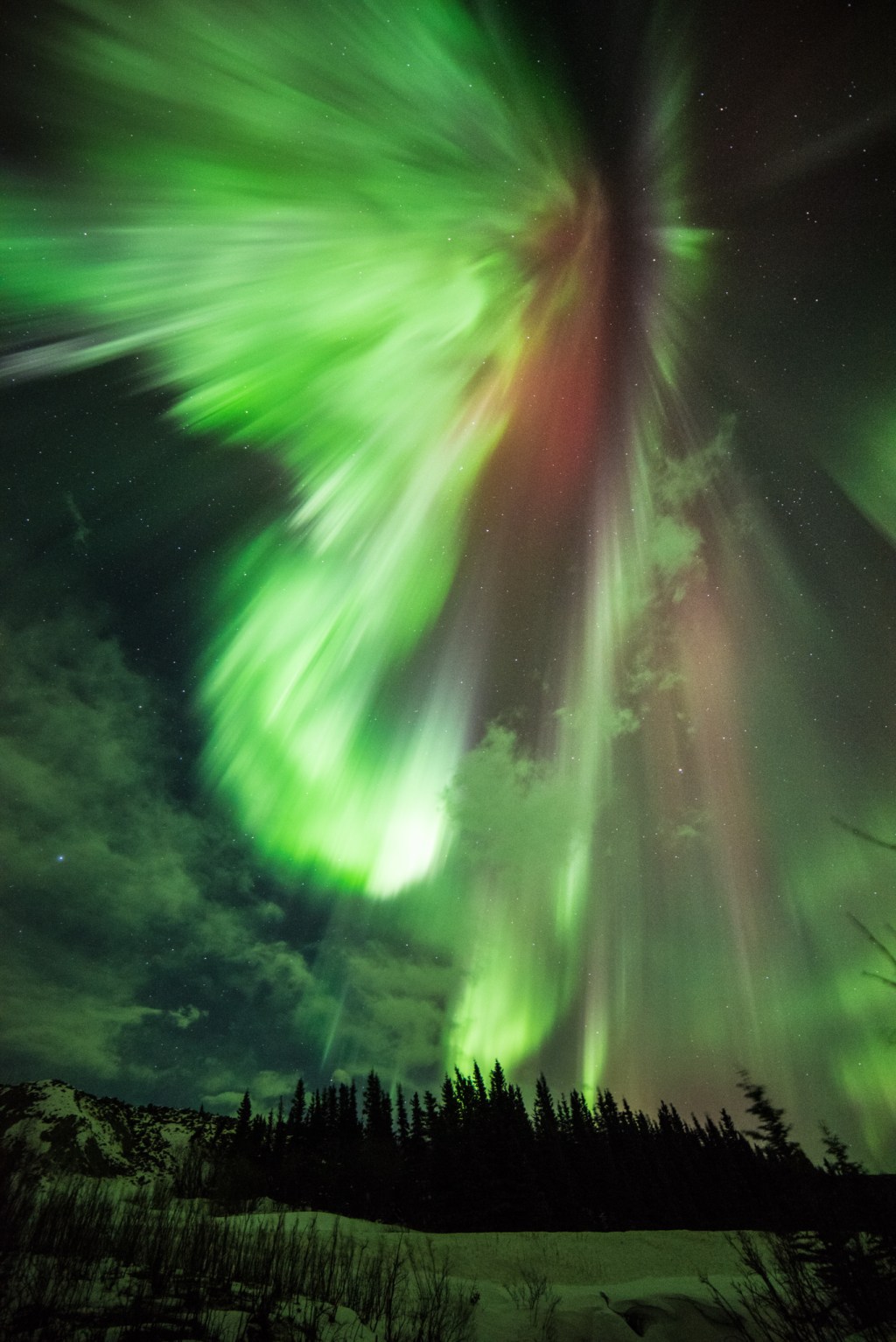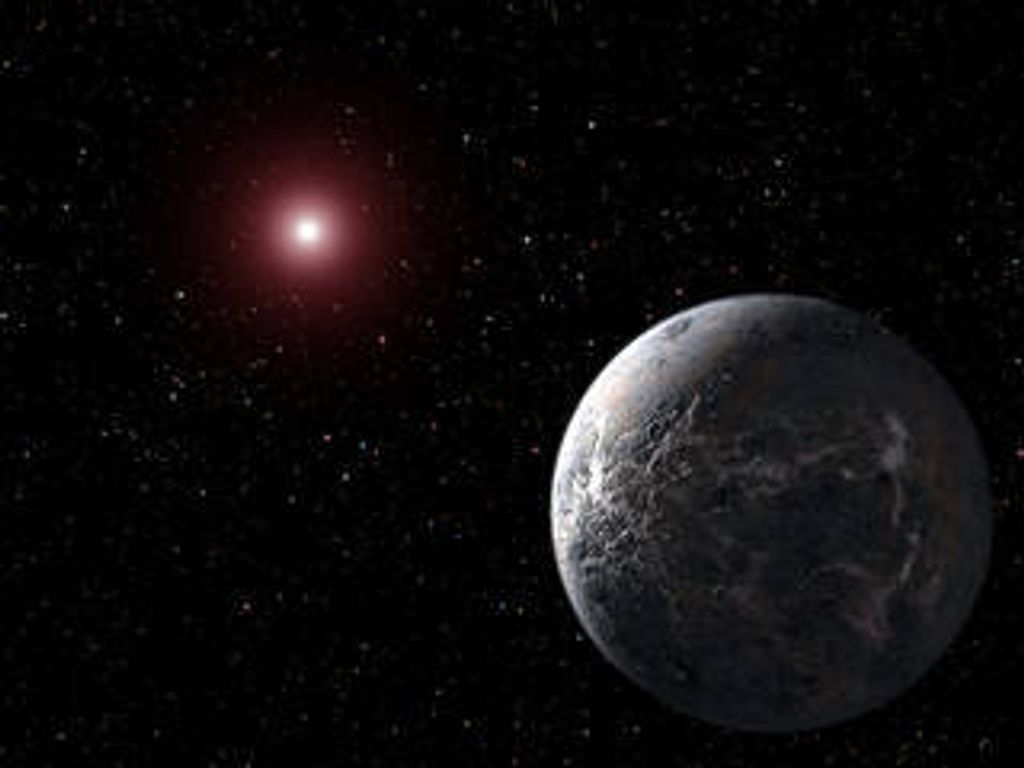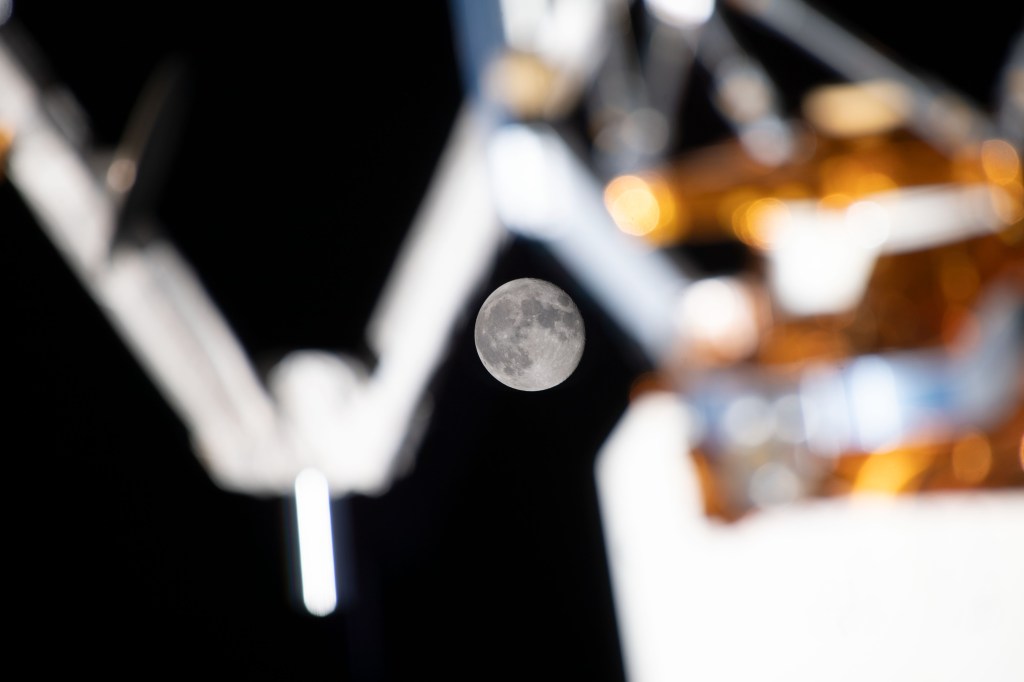1 min read
Rapid Weather Changes Observed on Mars

NASA Hubble Space Telescope images of Mars, obtained over three consecutive days between July 9 and 11, 1997, dramatically show that the behavior of dust and water-ice clouds exhibit substantial daily variations. The full-disk images are shown along the top (Pathfinder landing site marked by the green crosses), and maps of the North polar region are shown along the bottom. (The maps are oriented with 0 degrees longitude to the bottom, and extend from 40 degrees North latitude to the pole; latitude circles are shown at 40, 60, and 80 degrees, and lines of longitude are shown every 45 degrees.) About 24 hours separates each of the images.
The polar maps document the movement of bright water-ice clouds as they are seen to progress eastward, perhaps driven by a passing weather front on Mars. Between July 9 and 10, the polar cloud seen near 60 degrees N latitude is measured to have moved about 550 km eastward over a period of about 24 hours, corresponding to a velocity of about 22 km/hour. The cloud has dissipated considerably by July 11.
Clouds in the southern hemisphere seem to thicken considerably over this three day period as well. The bluish south polar hood, composed of water-ice clouds, is seen along the bottom of the images. We cannot see the south polar cap, since the north polar cap is tilted toward us during this season and the south cap is in winter darkness.
On the July 9 image and map, a streamer of dust is visible in the North polar region, extending about 1200 km southward from the dark sand dunes surrounding the polar ice cap; diffuse dust is visible over much of Acidalia, the dark region to the north of the Pathfinder landing site. This dust cloud is apparently diffusing with time, as it seems to become less distinct in each successive image. This dust storm may be supplying some of the dust seen overhead by the Pathfinder spacecraft.
These HST images support the conclusion that Pathfinder landed during a period when large changes in the regional distributions of dust and clouds were taking place on Mars, a point not readily evident from the localized Pathfinder site observations. These and future simultaneous observations between HST and Pathfinder will help place the detailed observations made by Pathfinder into the global perspective offered by HST.
- Object NameObject NameA name or catalog number that astronomers use to identify an astronomical object.Mars
- Release DateJuly 15, 1997
- Science ReleaseHubble Sees Rapid Weather Changes On Mars, New Dust Activity
- CreditSteve Lee (Univ. Colorado), Phil James (Univ. Toledo), and Mike Wolff (Univ. Toledo) and NASA
Related Images & Videos

Decay of a Martian Dust Storm
NASA Hubble Space Telescope images of Mars, taken on June 27, 1997 (left) and July 11, 1997 (right), document the dissipation of a large dust storm during the 12 days separating the two observations. The images were taken to monitor the weather conditions near Ares Vallis, the...
Share
Details
Claire Andreoli
NASA’s Goddard Space Flight Center
Greenbelt, Maryland
claire.andreoli@nasa.gov

